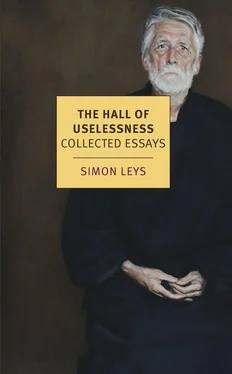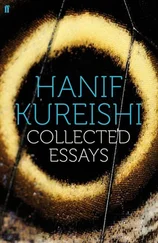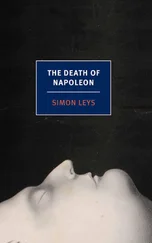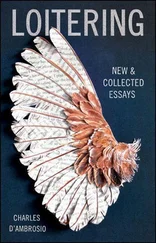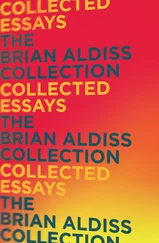The very centrality of the place calligraphy occupies in Chinese life and culture paradoxically explains why the West took such a long time to appreciate it as an art. When two great civilisations, utterly foreign to each other, come into direct contact, it seems that, at first, they cannot exchange anything but blows and trinkets. Mutual access to the core of their respective cultures necessitates a lengthy and complex process. It demands patience and humility, for outsiders are normally not allowed beyond a certain point: they will not be admitted to the inner chambers of the spirit, unless they are willing to shed some of their original baggage. Cultural initiation entails metamorphosis, and we cannot learn any foreign values if we do not accept the risk of being transformed by what we learn.
In the case of Chinese calligraphy, the difficulty is further compounded by two more obstacles. First, by its very nature, calligraphy is intimately linked with Chinese language; its full appreciation may at times require a certain familiarity with a rich and intricate network of historical, philological and cultural references. To what extent is it necessary to be able to read Chinese in order fully to enjoy Chinese calligraphy? A preliminary (and crude) answer may be provided in the form of another question: To what extent is it necessary to be able to read music in order to enjoy a musical performance? Such knowledge would naturally help, without being strictly indispensable; the degree of sensitivity of the spectator (or the listener) can, to some degree, make up for what he may be lacking in intellectual information.
In the appreciation of calligraphy, the main advantage that can be derived from the ability to read Chinese is not so much that the viewer has access to the content of the calligraphic inscription (this content can be quite indifferent, as we shall see immediately). It is rather that, knowing the rules and graphic mechanisms of the Chinese script, he is able to follow and to reconstruct in his mind the successive movements of the calligrapher’s brush.
The relation between calligraphic form and literary content (i.e. between the calligraphy itself and the text it conveys) might in a way be compared to the relation between painters and their models in Western portrait painting. There are exceptional encounters where the genius of the sitter may add an extra sparkle to the genius of the painter — think, for instance, of the portrait of Thomas More by Holbein, or of Chopin by Delacroix. Most of the time, however, the very identity of the model is largely irrelevant. (Who was Mona Lisa? Who cares?) Similarly, there are some instances of great calligraphies inspired by admirable texts; usually, however, the nature of the text which provided a base — or a mere pretext — for the calligraphic performance has no significant bearing upon the artist’s achievement, and there are many examples of sublime calligraphies that took flight from dull and trite dissertations.
Furthermore, there is even a style of calligraphy — a particularly exciting and creative one — which renders the original text practically illegible for most viewers: the so-called grass-script ( cao shu ) in its “crazy” form ( kuang ) is a sort of frenzied stenography, dashed in a wild outburst of intoxicated inspiration. Only practitioners and specialists can decipher it — and yet, even for the common viewer, it is one of the most spectacular and appealing styles. Its illegibility poses no obstacle to the enjoyment of the ordinary public, since — as we have just said — this enjoyment does not reside in a literary appreciation of the contents but in an imaginative communion with the dynamics of the brushwork. What the viewer needs is not to read a text but to retrace in his mind the original dance of the brush and to relive its rhythmic progress.
A second, even more fundamental, obstacle to appreciating calligraphy derives from a fact I have already mentioned: with their writing the Chinese actually possess one more art —calligraphy has no parallel in any other of the great literate civilisations. As a result, the very existence of this art could not immediately register in the consciousness of early Western travellers. The reason is that, usually, people do not see, they only recognise. And what they do not recognise remains invisible to them. For centuries, foreign visitors to China, even if they were highly educated, remained simply blind to the Chinese art of calligraphy — or when they took notice of it, they betrayed a staggering incomprehension. Thus, for instance, in the mid-nineteenth century, a French missionary who, otherwise, was a fluent linguist and an exceptionally perceptive observer, with a long and intimate experience of China, could still express this typical comment: “Chinese writing is displayed everywhere for decoration, but it is unpleasant at first sight and shocks by its oddity.” In the long run, however, he admitted that one could progressively “become used to” this weird sight.
To call it “calligraphy” was a way of conceding to it some sort of artistic merit. Still, the choice of this name was unfortunate and generated a deeper sort of misunderstanding. By its very etymology, “calligraphy” means “beautiful writing”; i.e. writing that is made beautiful by the addition of various ornaments or by application of a decorative treatment — a definition which suits diverse decorative arts or minor arts that are more familiar to us, such as — let us say — Gothic calligraphy or Arabic calligraphy. What the Chinese call shu , however, simply means “handwriting”; the word is often paired with hua , “painting”—and in this context, to speak of “beautiful writing” would be as preposterous as to speak of “beautiful painting.” As J.F. Billeter points out in The Chinese Art of Writing , it is the writing itself that is the art, and it needs no adventitious or optional “artistic” complement to reach that status.
* * *
Clichés can unwittingly reflect deeper truths. Many years ago, a facetious colleague sent me a copy of an old cartoon from Ripley’s famous series Believe It or Not! This particular item dealt with China and presented an assortment of fanciful or semi-factual distortions and common beliefs about Chinese language, culture, history and customs. The interest of this cartoon was that it offered a fairly representative summing up of the popular perception of China in the Western consciousness. The gist of this perception was not so much that China was enigmatic, complicated and bizarre, as more specifically that it was a topsy-turvy world: the Chinese do everything exactly in reverse of our “normal” usages and procedures. For instance, “When the Chinese build a house, they start from the roof”; “When in mourning, they wear white”; “They write upside down, and right to left”; “When greeting someone, they shake their own hand,” etc. None of these observations is actually wrong. And the general conclusion is basically valid. Here lies, in fact, the secret of the inexhaustible attraction which China and the West have always exerted upon each other: within the human experiment, they stand at each other’s antipodes. It might even be tempting to compare their mutual fascination to the magnetism that draws the two sexes together, but this erotic metaphor should probably be resisted here, since its inspiration is too narrowly Western.[1]
China poses a permanent challenge to various notions which we naïvely assume to have universal validity — but which prove in fact to find application only within the limits of our own cultural world. In linguistics, for instance, there is a basic axiom according to which writing is necessarily preceded by speech — and this principle actually seems to tally with common sense and common experience. If you go to China, however, your cosy certainty begins to evaporate: the primacy of speech, which has commanded all our culture since antiquity, may well have been a mere Indo-European idiosyncrasy.
Читать дальше
